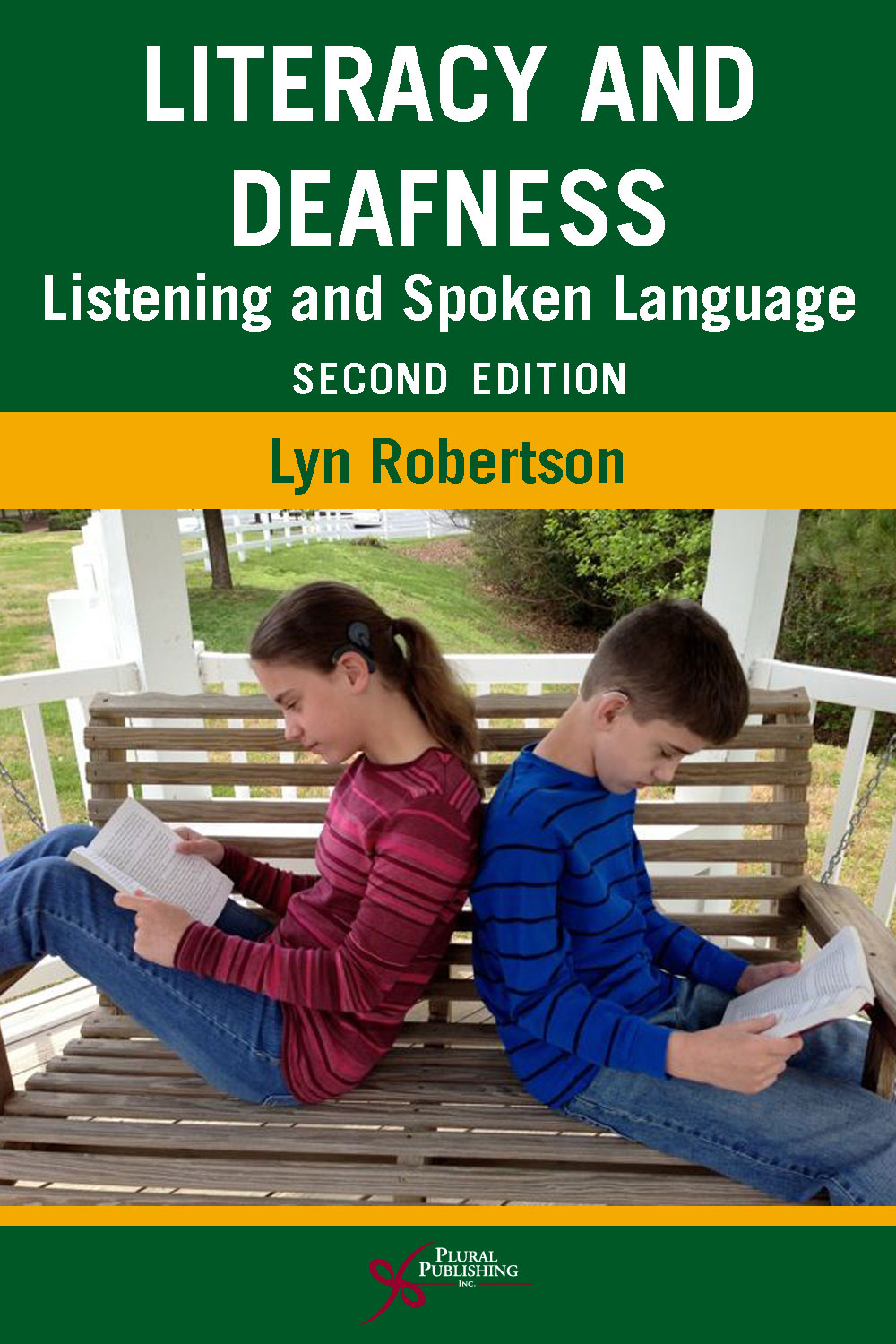
Literacy and Deafness: Listening and Spoken Language
Second Edition
Lyn Robertson
Details: 400 pages, B&W, Softcover, 6" x 9"
ISBN13: 978-1-59756-557-8
© 2014 | Available
Purchase
Literacy and Deafness: Listening and Spoken Language, now in its second edition, is intended for speech-language pathologists, teachers, and parents of children with hearing loss. Research shows that literacy levels are generally higher in individuals with hearing loss who have learned the spoken language they are reading. At a time when advancements in technology continue to provide increasingly improved access to sound and spoken language, this book pulls together the dominant research from the "hearing world" and applies it to the world of the deaf and hard of hearing. The author argues that helping a child learn to listen and speak is the best way to ensure he or she will learn to read and write.
For the second edition, the author has revised and updated the content, expanded several chapters, and added four new chapters:
- Reading Aloud with Children
- Creating and Using Language Experience Books
- Music Learning and Spoken Language Development
- Parenting a Child with Hearing Loss
- Where Are They Now? Listening and Spoken Language Outcomes
Literacy and Deafness: Listening and Spoken Language, Second Edition, is a valuable tool for those who wish to help individuals with hearing loss develop the highest possible levels of literacy.
Reviews
"This book is aimed at those who wish to know more about how spoken language underpins the development of literacy. However, much of the content is applicable to all children, as well as to those with a hearing loss. This second edition includes 20 chapters, five of which are new. These include an historical overview of reading achievements of people with hearing loss; reviews of literacy theories; different approaches to reading, propounding the importance of developing language as a basis for reading, not just phonics; as well as excellent examples of ways in which literacy might be developed both at home and at school. The author alludes to the auditory-verbal approach throughout the book and it finishes with a more detailed description of this approach, including thoughts from two of its founders, Daniel Ling and Helen Beebe. ..."
—Judy Halden, Specialist SLT with Deaf People, Integrated Services for Learning, Low Incidence Team, Hertfordshire, Royal College of Speech & Language Therapists (2014)
"Lyn Robertson is persuasive in her arguments and lays out very clearly her reasons, backed-up by extensive evidence, for advocating an auditory-verbal approach. There are many practical measures in this book that would be useful for speech pathologists, teachers and parents of children with hearing loss. In fact this book is useful for any parent whose child is learning to read and write."
—Hannah Street, in Audiology Now (2015)
Preface
Contributors
Chapter 1. A History of Reading Achievement in People with Hearing Loss
- Introduction
- A Review of Selected Studies
- Higher Academic Achievement and Spoken Language
- Conclusion
- References
Chapter 2. Literacy Theories
- Introduction
- Theorizing About Reading
- Definitions of Reading
- Word Identification
- Comprehension
- An Interactive Theory
- Many Disciplines Study Reading
- Conclusion
- References
Chapter 3. Technology and Listening, by Carol Flexer, Ph.D., LSLS CERT. AVT
- Introduction
- Neurologic Basis of Listening and Literacy
- Computer Analogy for Understanding Amplification Technology
- Overview of Amplification TechnologiesA New Context
- Cochlear Implants
- Auditory Feedback Loop
- Distance Hearing/Incidental Learning
- New Context for the Word Deaf
- Conclusion
- References
Chapter 4. Spoken Language
- Introduction
- Learning the Sounds of a Spoken Language
- Beyond the Sounds of Language
- What About Bridging from American Sign Language?
- Learning Spoken Language
- Two Extended Studies of Childrens Language Learning and Later Academic Achievement
- Advantaged and Disadvantaged Parents
- Conclusion
- References
Chapter 5. Hearing, Listening, and Literacy
- Introduction
- Phonological Awareness
- Phonological Processing Capabilities
- The Auditory-Verbal Approach
- Principles of Listening and Spoken Language Specialist Auditory-Verbal Therapy (LSLS Cert. AVT)
- Principles of Listening and Spoken Language Specialist Auditory-Verbal Education (LSLS Cert. AVEd)
- Conclusion
- References
Chapter 6. Issues in Child Development, by Gina Dow, Ph.D.
- Introduction
- Sensitivity in the Caregiving Relationship
- Part I: Early Identification
- Attunement and Early Identification of Hearing Loss
- Early Identification and InterventionHow Early Is Early Enough?
- Early Identification in the United States
- From Screening to Identification to Intervention
- Concluding Remarks and Recommendations
- Part II: Typical DevelopmentBirth to Age Five
- Cognitive Development and Play
- Motor Development
- Development of Self-Help Skills
- Developmental Context
- The Family Context as the Childs Immediate Environment
- The Social and Economic Context
- The Cultural Context
- When Hearing Impairment Co-Occurs with Other Conditions
- Useful Links on Developmental Milestones, Developmental Disabilities, and Hearing Impairment
- References
Chapter 7. Learning to Read
- Introduction
- Constructivism in Action
- Shared Book Reading
- Establishing a Rich Literacy Environment
- Reading Comprehension and the Child
- Practical Ideas for Helping Children Learn to Read
- Conclusion
Chapter 8. Reading Aloud With Children
- Introduction
- When Should Reading Aloud Begin?
- Howand WhyShould Reading Aloud Begin?
- Reading Aloud is an Indirect Way of Teaching a Child How to Read
- Reading Aloud is also a Direct Way of Teaching a Child How to Read
- How to Read Aloud with a Child with Hearing Loss
- An Extraordinary Example of Reading Aloud: The 1000-Day Reading Streak
- Conclusion
- References
Chapter 9. Learning to Write
- Introduction
- Writing and the Auditory-Verbal Approach
- A Word About Development
- Practical Ideas for Helping Children Learn to Write
- Conclusion
- References
Chapter 10. Creating and Using Language Experience Books
- Introduction
- Start and End with Listening
- A Spiral Progression through Using Language Experience Books
- Deciding on the Content for an LEB Entry
- An Example
- Conversations about Making and Using Language Experience Books
- General Comments from Teachers and Therapists about Using Language
- Experience Books
- Similarities and Differences Among Children With and Without Hearing Loss
- Using Background Knowledge
- Experiences of Teachers Who Have Been Trying Language Experience Books
- A Mothers Experience with Language Experience Books
- Conclusion
- References
Chapter 11. Proceeding Through School
- Introduction
- The Fourth-Grade Slump
- Readers Who Are Deaf or Hard of Hearing and the Fourth Grade Level
- Phonological Awareness, Vocabulary, and Reading Achievement
- Vocabulary Growth
- Comprehension Growth
- Academically Successful Young Adults with Hearing Loss
- Conclusion
- References
Chapter 12. Parents, Therapists, and Teachers Working Together
- Introduction
- Emotional Connectedness and a Team Approach
- IDEA and IEPs
- Using Mediation and Mediation Skills
- Practical Ways for the Team to Communicate
- Conclusion
- References
Chapter 13. English Language Learners and Bilingualism
- Introduction
- Can Children with Hearing Loss Learn More Than One Spoken Language?
- Learning to Read in the First Language First
- Multilingual Mastery is Possible
- Hearing or Deaf, Language Learning Is Possible
- Conclusion
- References
Chapter 14. Music Learning and Spoken Language Development
- Introduction
- Issues Involved in Learning about Music
- Music Learning in Children with Hearing Loss
- Music Learning in Children with Typical Hearing and its
- Association with Literacy
- Music Lessons for Children with Hearing Loss who are Learning to Listen
- The Work of Two Talented Therapists
- The Suzuki Approach and Literacy
- Conclusion
- References
Chapter 15. Assessment Issues and Approaches
- Introduction
- Norm-Referenced Standardized Tests
- Criterion-Referenced Tests
- The Relative Value of Norm-Referenced and Criterion-Referenced Tests
- Practical Reading Assessments for Teachers to Use
- Conclusion
- Refernces
Chapter 16. Promising Literacy Programs
- Introduction
- Four General Suggestions
- Before, During, and After Reading
- Basic Elements of a Lesson Plan
- Specific Steps for Meeting Literacy Goals
- Reading and Writing as Thinking: The Basis of Good Programs in Reading
- Conclusion
- References
Chapter 17. Educational Settings for Children with Hearing Loss
- Introduction
- The Optimum Placement
- What if the Optimum Is Not Possible?
- Schooling Is Not the Only Source of Education
- A Letter to a Mainstream Classroom Teacher
- Conclusion
Chapter 18. Parenting a Child with Hearing Loss
- Introduction
- Some Precepts to Consider
- Conclusion
- References
Chapter 19. Where Are They Now? Listening and Spoken Language Outcomes
- Introduction
- The Questions
- The Respondents
- Reference
Chapter 20. Thoughts From Two Founders of the Auditory-Verbal Approach
- Introduction
- Foreword, 1990, by Daniel Ling, Ph.D.
- An Auditory-Verbal Retrospective: A Personal Account of Individual Effort and International Organization, 1989, by Helen *:Hulick Beebe, CCC/SP
- References
Appendix A. Knowledge Needed by Listening and Spoken Language Specialists
Appendix B. Listening and Spoken Language Specialist (LSLS) Domains Addressed in This Book
Appendix C. Description, Approaches, and Practice of Listening and Spoken Language Specialists
Index
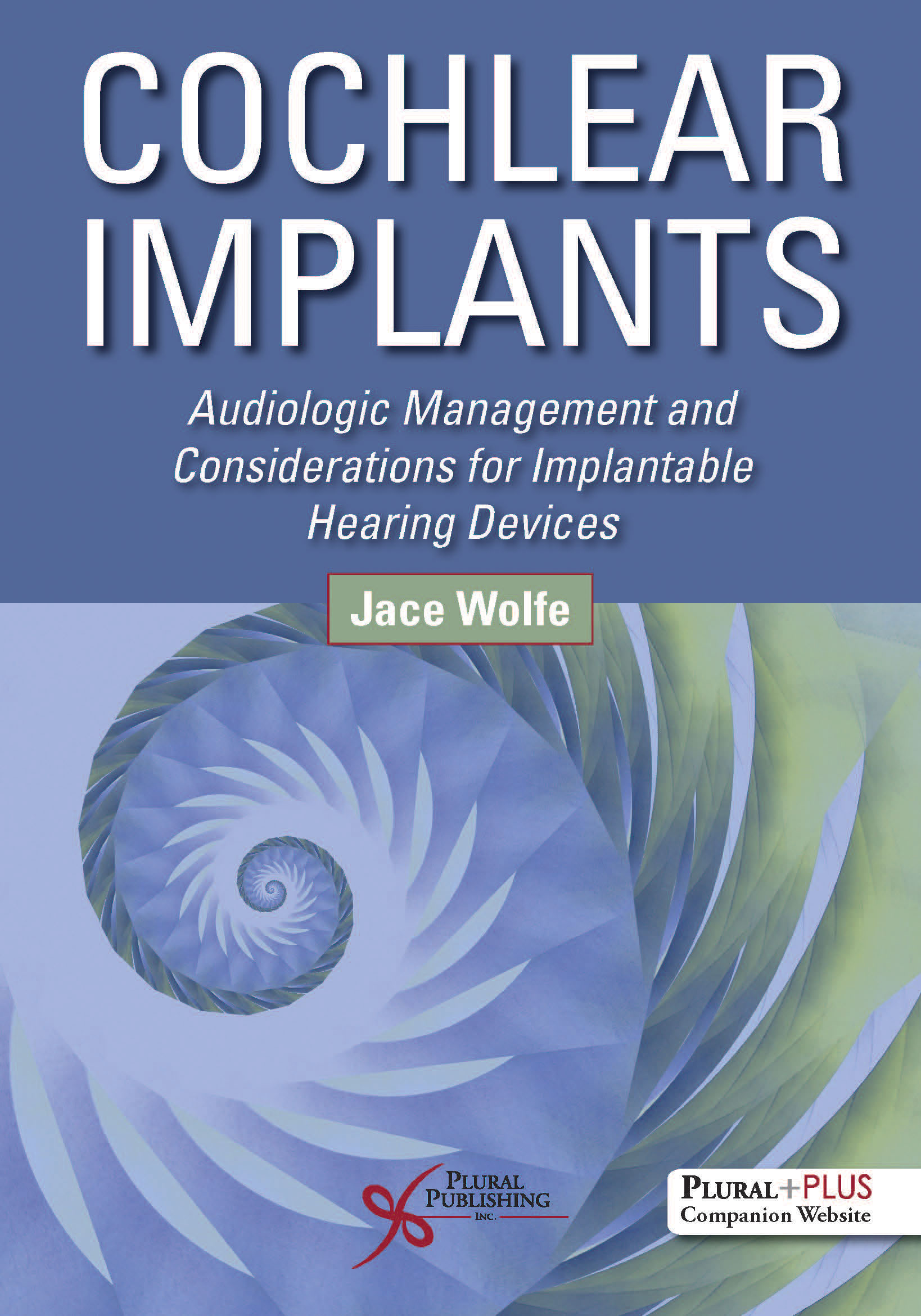
Cochlear Implants: Audiologic Management and Considerations for Implantable Hearing Devices
First Edition
Jace Wolfe
Details: 858 pages, Full Color, Hardcover, 8.5" x 11"
ISBN13: 978-1-59756-892-0
© 2020 | Available
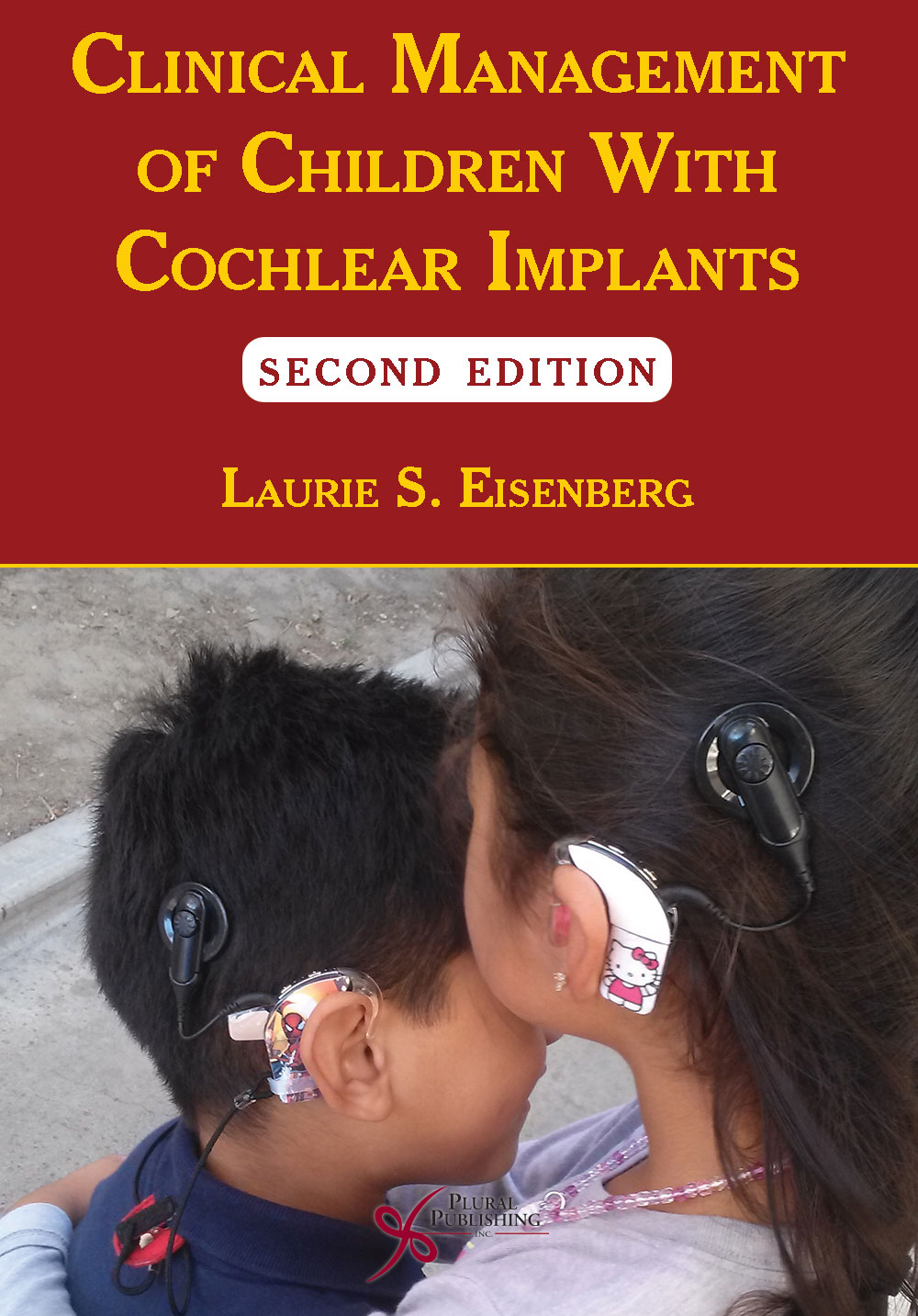
Clinical Management of Children With Cochlear Implants
Second Edition
Laurie S. Eisenberg
Details: 890 pages, B&W, Softcover, 7" x 10"
ISBN13: 978-1-59756-723-7
© 2017 | Available
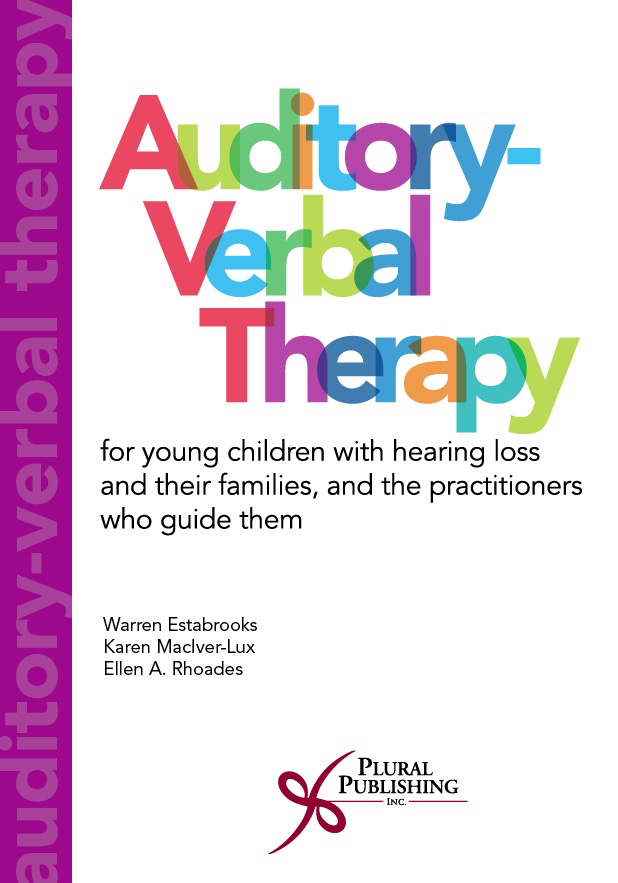
Auditory-Verbal Therapy: For Young Children with Hearing Loss and Their Families, and the Practitioners Who Guide Them
First Edition
Warren Estabrooks, Karen MacIver-Lux, Ellen A. Rhoades
Details: 602 pages, B&W, Hardcover, 7" x 10"
ISBN13: 978-1-59756-888-3
© 2016 | Available
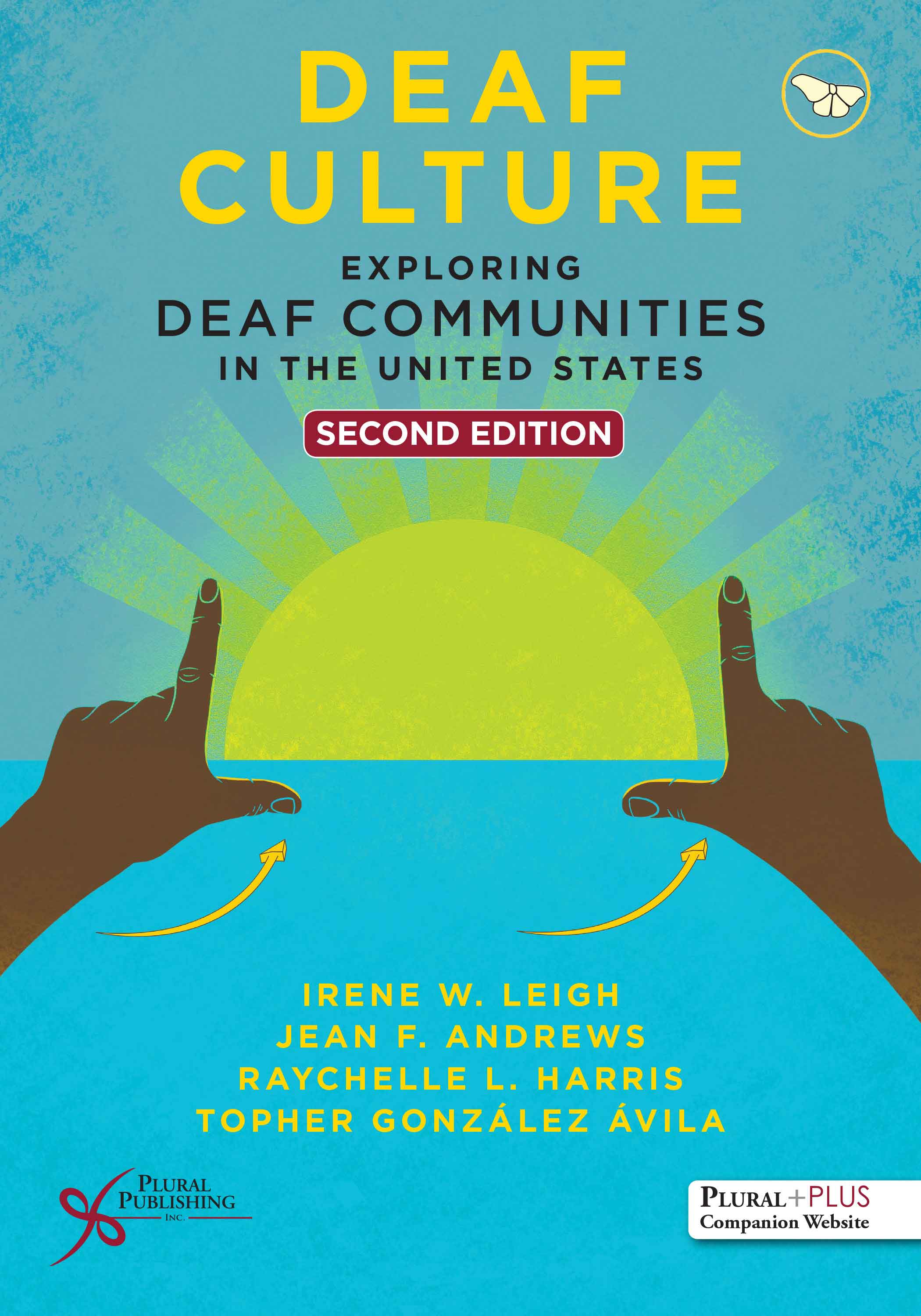
Deaf Culture: Exploring Deaf Communities in the United States
Second Edition
Irene W. Leigh, Jean F. Andrews, Raychelle L. Harris, Topher González Ávila
Details: 384 pages, B&W, Softcover, 7" x 10"
ISBN13: 978-1-63550-173-5
© 2022 | Available
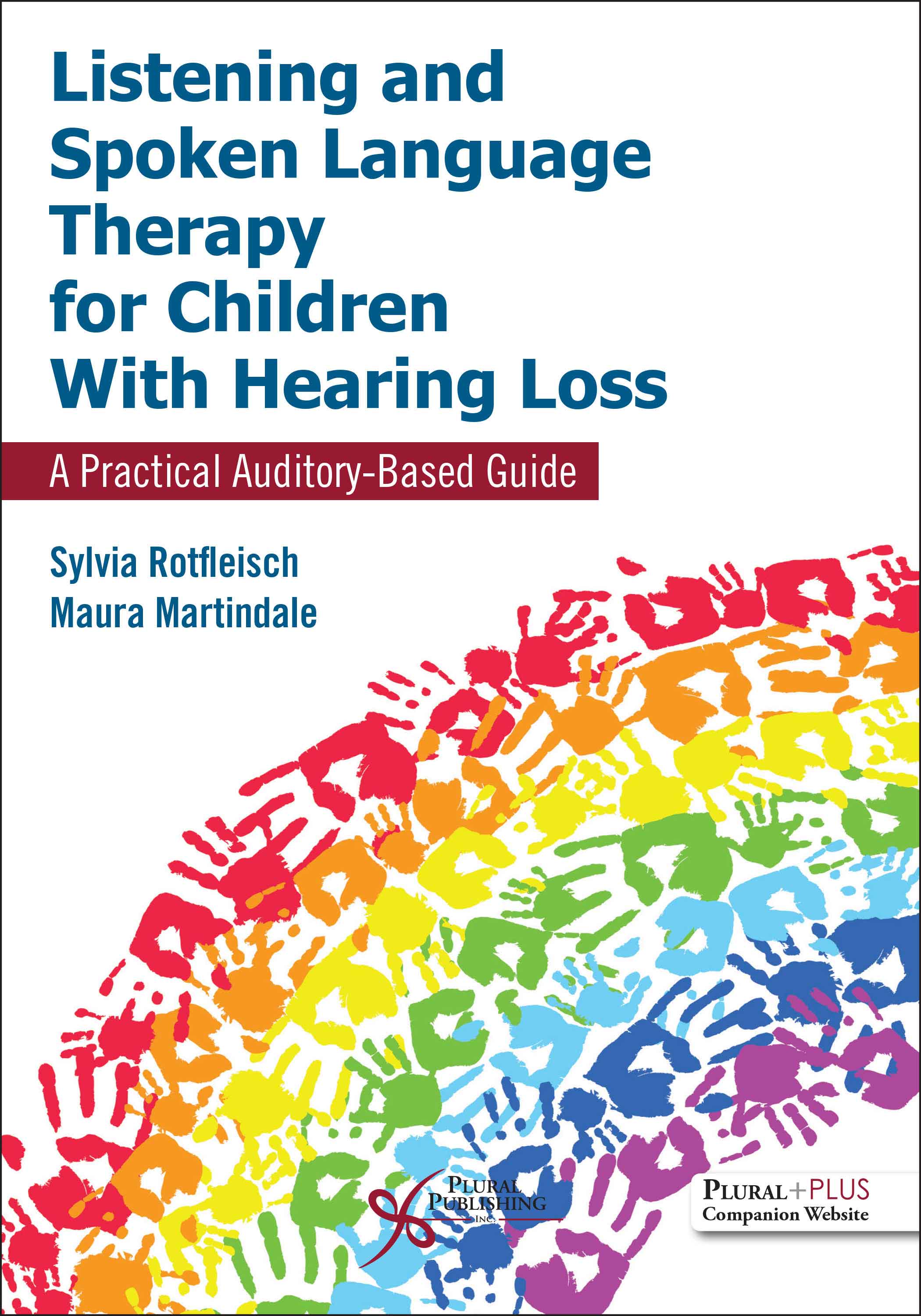
Listening and Spoken Language Therapy for Children With Hearing Loss: A Practical Auditory-Based Guide
First Edition
Sylvia Rotfleisch, Maura Martindale
Details: 310 pages, Full Color, Softcover, 7" x 10"
ISBN13: 978-1-63550-387-6
© 2023 | Available

